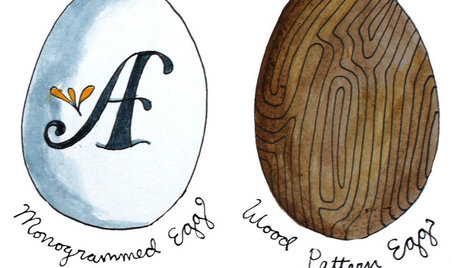Monarch eggs & cats - first in 3 years
spaceman13
9 years ago
Related Stories

GARDENING FOR BUTTERFLIESBe a Butterfly Savior — Garden for the Monarchs
Keep hope, beauty and kindness alive in the landscape by providing a refuge for these threatened enchanters
Full Story
FLOWERS AND PLANTSHelp Monarchs and Other Butterflies by Planting Common Milkweed
Summer-blooming Asclepias syriaca is an important larval host plant for the monarch butterfly and attracts a number of pollinating insects
Full Story
FALL GARDENINGWhat Monarch Butterflies Taught Me About Garden Design
Thinking like a butterfly leads to fresh perspectives in the garden and in life
Full Story
GARDENING GUIDESHelp Fuel the Monarch Migration With These 6 Prairie Plants
Try these nectar-rich beauties and help autumn monarchs
Full Story
FALL GARDENINGReflecting on a Gardening Year
Mistakes and successes, surprises and comforts. The garden helps us grow in new ways every year
Full Story
LOFTSHouzz Tour: 12 Years of Tinkering Produce an Amazingly Artful Loft
Major DIY efforts turn 3 units in a former Portland factory into a single home brimming with personality
Full Story
DECLUTTERINGYour Clutter-Clearing Plan for the New Year
Tackle these tasks month by month for a decluttering strategy that will really pay off
Full Story
FUN HOUZZTrendy Themes Get a Last (Maybe?) Hurrah on Fantasy Easter Eggs
Forget pastel dip dye — these imaginary eggs give 8 popular decorating themes one last chance
Full Story
HOLIDAYS16 Creative Ways to Hide Easter Eggs
Crack of dawn on Sunday not your ideal thinking time? Just follow our creative egg-hiding ideas and pretend Peter Cottontail did the work
Full Story
COLORDuck Egg Blue, the Friendliest Color Around
This appealing hue transcends trends, spans styles and gets along with many other colors. Could it be right for one of your rooms?
Full StoryMore Discussions







Leafhead
molanic
Related Professionals
Glen Ellyn Landscape Architects & Landscape Designers · Piqua Landscape Architects & Landscape Designers · Wakefield Landscape Contractors · La Mirada Landscape Contractors · Pleasanton Landscape Contractors · Smyrna Landscape Contractors · University City Landscape Contractors · Claremont Fence Contractors · Cockeysville Fence Contractors · Eastvale Fence Contractors · Meridian Fence Contractors · Saginaw Fence Contractors · Safety Harbor Fence Contractors · Decatur Window Contractors · Vashon Window ContractorsTony G